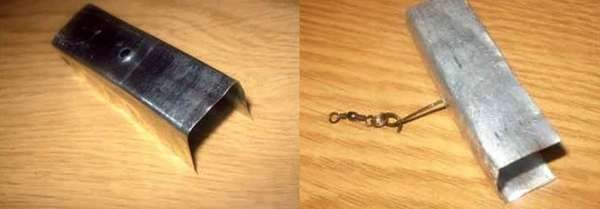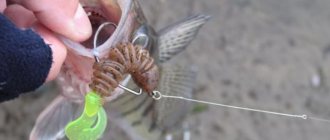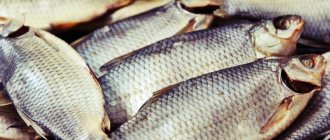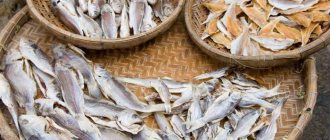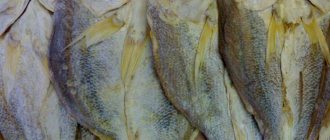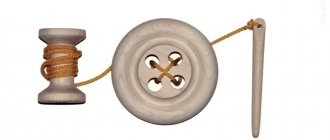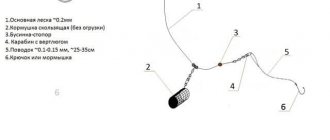An article about the correct feeding of non-predatory fish in the desired section of the river.
To properly bait on a river, you need to take into account many factors: the depth of the reservoir, the speed of the current, the structure and topography of the bottom, the object of fishing and its preferences in a moving environment. First, let's look at some basic principles. As a rule, in flowing water, feeding should be more abundant than in stagnant water, since here not only fish, but also the movement of water causes erosion of the food. The stronger the current, the fuller the buckets with bait should be. On rivers it often happens that fish feed predominantly at the bottom. Therefore, portions of bait should reach the bottom almost without loss and only break apart there. At the same time, you should remember how deep the reservoir is. The deeper it is, the larger (and heavier) the bait balls should be. At the same time, the rule applies: the deeper in the fishing spot, the further upstream we should throw the balls.
How and what is the best way to feed fish in winter
During my many years of amateur fishing practice, I experimented a lot with bait, read interesting scientific and popular science books and came to certain conclusions.
I want to share my thoughts and experience here.
In summer, fish use their sense of smell to sense wind-borne odors from insects and plants surrounding the pond and react accordingly to the appearance of sources of these odors in the water. I think that here lies an explanation for the effectiveness of using bait, groundbait, and attachments of plant origin in the summer (not to mention insects, which many fish feed on).
Feeding tactics based on the body of water
Even novice amateur anglers can cope with the preparation of bait, select the desired consistency and add the desired components. But if fishing takes place on a river with a fast current, how to properly feed the fish and observe the fishing zone.
- We roll large balls. This way the cast will be targeted.
- Thick consistency. To ensure this property, we add clay from the same reservoir from which we fish. Oatmeal is great for adding nutritional value.
- We also use clay to weight the balls. If there is no clay, then gravel will do.
If the current is insignificant or absent at all, first feed it generously, and then add small portions from time to time. If the flow is fast, you need to feed more often, since this entire “kitchen” is washed away.
Bait in winter
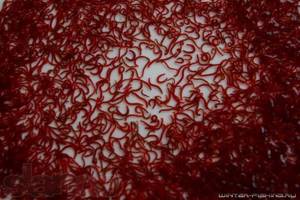
In winter, plant bait can have the opposite effect. Pisces are not “tuned” to her, and therefore they are little attracted to her. In addition, fish are inactive at this time, and plant products can remain untouched at the bottom for a long time. After some time they turn sour and begin to decompose. The fish tries not to approach such a place.
Winter conditions in stagnant and low-flowing reservoirs differ significantly from summer ones in terms of water temperature, the amount of dissolved oxygen, mixing of water layers, and even the level of noise pollution.
The water temperature at depth in such reservoirs in winter is almost always constant - 4-5 degrees Celsius. The content of oxygen dissolved in water decreases due to the decay of aquatic plants and its limited supply from the outside. Sound vibrations and noise penetrate through the ice and snow cover to a much lesser extent into the fish habitat. There is almost absolute silence in the water under the ice. And in this silence, the fish rely mainly on hearing - both in searching for food and in detecting danger.
Baits for catching bream in weak currents
To catch bream in lakes, stretches, reservoirs, and rivers with weak currents, lighter baits are used. The basic components are store-bought bait and boiled cereals: peas, millet, corn, pearl barley and wheat.
Many old donkeys adhere to their classic canons and use peas ground in a meat grinder, boiled millet with the addition of sugar, egg and crackers. This simple recipe still works today. The mixture is filled into mesh feeders and delivered to the fishing point.

Feeder operators use store-bought formulations marked “lake” and “feeder-bream”. These baits contain more small particles: biscuit, breading, milk powder. One fishing trip also requires several kilograms of bait and a third of millet and peas. Millet is made crumbly by washing it under running cold water. Peas must be ground in a meat grinder. It becomes light as flakes and is easily separated from the bait balls and from the feeder. More crackers, bran and rolled oats are added to the bait for standing water. The result is a balanced mixture that contains both small and large components.
If sweet corn is added, the grains are lightly crushed so that they do not look too appetizing. This is done so that the nozzle stands out against the background of the elements lying around it.
Naturally, these baits are also moistened. Sweet liquids and molasses are added. The task remains the same - to keep the bream on the point for as long as possible, give it a lot of food and always serve large and attractive bait. One feeder fishing in warm weather requires 4-5 kg of bait for one or two fishing rods.
If we use bulk grains, we must sift them. We pass the coarse mixture through a sieve with a mesh size of 4 mm, and sift the finer bait through a sieve with a mesh size of 2 mm. We do this before adding it to the bait, so that we do not have lumps and compressed pieces of bait. We then moisten these pebbles and also pass them through a sieve.
A few more words about flavors. It’s not always possible to guess the smell of bait and you have to look for some way out while fishing to correct the situation. There should be at least 6-7 different sprays in stock. These small plastic bottles can be carried in a small bag like this:
If you see that there are no bites for a very long time, then try spraying the feeder with bait and the bait with different sprays. The fresh aroma interrupts the already slightly weathered aroma of the bait. We change the spray after 3-4 casts without bites. A bite should occur on some scent.
Fish nutrition in winter
Adults of bream, roach, silver bream, ide, rudd and other fish in winter feed on zoobenthos - worms, leeches, mollusks, insect larvae. A significant place in the diet of such fish is occupied by the widespread bloodworm - the larva of the long-running mosquito.
How does a fish find bloodworms? Through sight, smell and hearing. You can add touch, but only after she discovered it. But from the angler’s point of view, this is already a bite and belongs to the topic of another conversation.
To get bloodworms, the fish must first of all find the place of its accumulation, dig up the silt or bottom soil.
How does a fish find food?
Scientists have found that fish perceive both mechanical and infrasonic and sound vibrations. In this case, low-frequency vibrations - 5-25 Hz - are perceived by the lateral line organs, and vibrations in the range of 25-13,000 Hz - by the auditory labyrinth, which is especially sensitive to vibrations in the range of 60-1600 Hz.
It is also known that when sound vibrations propagate in an elastic medium, they attenuate; The greater the impedance of the medium, the less sound energy is lost. In water, the attenuation of sound vibrations is 3.5 thousand times less than in air. If you imagine a person in the place of a fish, then under such conditions he would have to hear the breathing of his neighbor 10 kilometers away, and the noise from the movement of a fountain pen on paper hundreds of meters away.
In other words: fish not only hears better than humans, but also picks up sound vibrations at a much greater distance from the source.
The fish distinguishes bloodworms from other inhabitants of the reservoir by appearance, color, smell, and also hears its vibrations in the bottom soil.
It is very good to observe the behavior of bloodworms in an aquarium. Buried in the ground, it produces wave-like oscillatory movements with its body. A quiet tap of a finger on the glass of the aquarium or a slight disturbance of the ground causes the bloodworm to shrink and freeze. Having calmed down, after a while he again begins to make wave-like movements. Bloodworms behave in approximately the same way under natural conditions at the bottom of a reservoir.
Bloodworms can have two types of vibrations, or noise, emitted into the surrounding space: low-frequency sinusoidal mechanical vibrations of the body and high-frequency vibrations arising from friction of the body with the ground.
Under the ice and a thick layer of snow, conditions are ideal for fish to search for food using the auditory organ. From a great distance, they can determine where bloodworms accumulate in the bottom soil by its vibrations. Fishermen have noticed that large bream, roach, and ide begin to be taken well after freeze-up, when the reservoir is completely covered with ice and at least a thin layer of snow.
The vision of most fish is much less developed. They are able to distinguish small objects at a distance of up to a meter. It is clear that the fish can see the bloodworm only in close proximity to it.
When fishing, it often happens like this: in one hole the fish are actively biting, but nearby, in the next hole, just a few meters from the first, there is not a single bite using the same tackle and bait. This usually happens during a period when the fish are inactive. It seems to me that this phenomenon can be explained as follows. A small flock stops at the first hole, where, perhaps, the terrain is more convenient for fish (hole, stone, snag) or there is an accumulation of bloodworms in the bottom soil. The fish hears it well and digs it out. And she simply doesn’t see what’s happening nearby, a few meters away.
The sense of smell of fish, apparently, plays a secondary role in winter when searching for food, in particular bloodworms. Why do I think this? After all, bloodworms buried in the ground practically do not smell; the fish can smell silt or bottom soil. Another thing is bloodworms with mechanical damage or specially treated with odorous substances, but we will talk about this below.
Thus, in the natural conditions of a winter reservoir, it is the infrasound and sound vibrations emitted by bloodworms that attract fish. Using them, she determines the direction to places where bloodworms accumulate.
It has been noticed: holes into which bloodworms were added a few days before fishing give the best catches. Fish are attracted to them by larvae buried in the bottom soil and emitting vibrations.
When fishing, there are such cases: yesterday the fish were actively biting in the hole, but today there is not a single bite in it. But in the other one, which was “silent” yesterday, the bite began. Most likely, a school of fish “worked” at the first hole. She extracted bloodworms from the ground and walked away. Now this place for fish is not attractive in any way. After some time, biting may resume in the same hole if fresh live bloodworms are added to it.
Let's return to the smell of fish. When there is no bite in one of two adjacent holes, baiting with a small amount of small crushed or odorous bloodworms sometimes gives positive results.
Float tackle for roach in winter on the current
At shallow depths and not very strong currents, you can use a regular winter float fishing rod. After some modernization, it copes with its tasks perfectly. A heavier sliding weight is placed on such a fishing rod. Here you need to choose the right float - it should be larger than in calm water. You can use special composite floats. The current should not pull it under the ice when the fishing rod is positioned when the line between the tip of the fishing rod and the float is free. It is important to pay attention to this point.

Some fishermen tighten the line so that the gear does not blow away, but this way you can simply not notice the neat bite of the roach. The float itself must hold the tackle in the hole. A bite on such tackle will be expressed in intermittent or uniform immersion of the float. But do not confuse the bite and the possible effects of the current on the fishing line.
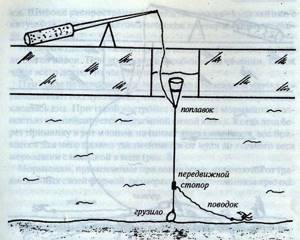
This gear is suitable for fishing in fairly calm water. In strong currents and great fishing depths, it is better to use other equipment.
Feeding with bloodworms
Some fishermen, when feeding fish, first specifically crush or freeze the bloodworms, believing that the larvae lying on the surface of the bottom attract fish faster. However, in such a situation, more mobile small fish are the first to approach the food and easily destroy easily accessible bloodworms lying right on the bottom. In such cases, bait turns out to be ineffective.
A live bloodworm, buried in the ground, attracts fish from a long distance with its vibrations. If bites start immediately, it means that the fish quickly discovered the bloodworms and can eat them just as quickly. Therefore, it is useful to throw fresh live bloodworms into the hole at short intervals using a special small feeder, which must be opened one to one and a half meters from the bottom.
You should not put frozen bloodworms into the hole, as they are lighter than water and will float up. By the way, frozen bloodworms can be stored in the refrigerator for a long time. After thawing, it loses its motor ability, but retains its visual appeal (for fish, of course!).
I would like to talk about one method of feeding and storing bloodworms, which I have been using successfully for a long time.
I prepare feed bloodworms for future use in briquettes. To do this, I fill molds (plastic toy dishes, etc.) with a mixture of sand (gravel), water and larvae and freeze them in a low-temperature freezer. To remove the briquette from the mold, just pour hot water over it. I store briquettes in the refrigerator in a plastic bag. When getting ready to go fishing, I wrap the bag of briquettes in newspaper and a rag and put it all in another plastic bag and put it back in the freezer. Frozen briquettes in this form do not thaw during the journey. The briquette is heavier than water, and without a feeder it can be lowered to the bottom, where it slowly melts.
At the same time, the fish sees the food, smells it, gathers in the hole, but cannot quickly eat the bait precisely because of the slow melting of the briquette. And this is exactly what is required to keep the flock near the hole.
Briquettes are also convenient because they can be stored for a very long time. I kept several briquettes in the freezer of the Oka refrigerator for almost a year, and during this time the bloodworms did not lose their visual appeal.
It is best to feed the fish with clean, fresh small bloodworms. Any aromatic substances or additives do not give a positive result. Some fishermen unwisely and wastefully and, most importantly, without the expected effect, throw valuable food products into the water in the form of various cereals, crackers, etc. I am convinced, and my practice confirms this, that such baits only cause harm to the reservoir, and to the fish, if and are attracted, it is only by chance. I repeat: in winter, if there is a sufficient food supply in the reservoir, the fish feed exclusively on zoobenthos.
Winter fishing rods for roach with a nod
The most convenient and working winter tackle for roach for fishing in the current is a fishing rod with a nod and a heavy sinker. For large fish, the fishing rod can be equipped with a heavy jig. But this option is not suitable for roach, so a sliding olive or a blind weight at the bottom with a retractable leash is used. The weight of the sinker is selected based on the strength of the current, most often from 5 to 30 grams. This fishing rod can also be used as equipment for fishing without a current, for example, in reservoirs at depths of 5-6 meters. Simply lowering a light fishing rod to the bottom in such conditions takes too long.

With sliding sinker
The simplest equipment for catching roach in the winter on the current is a sliding sinker, a stopper, a leash and a hook. Important points of such a fishing rod:
- A fairly large and heavy fishing rod (a small and light one will be pulled away from the installation site).
- Strong fishing line about 14-0.18 (when fishing for roach in the current and good depth, bream, large silver bream, and chub can bite).
- A fairly elastic metal nod that can withstand the pressure of the flow.
When biting, the line is pulled through the sinker, a nod shows this well.
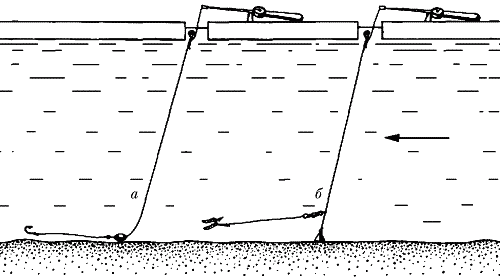
With retractable leash
A rig with a retractable lead is more versatile than a rig with a sliding sinker. In winter, roaches can stand either at the bottom or in the middle of the water. If you make a diverter leash on a loop with two stoppers, you can set the depth by raising the working part higher or lowering it lower along the main line, thus fishing the entire thickness of the water. A blind weight is installed at the end of the fishing line, holding all the gear at the bottom.
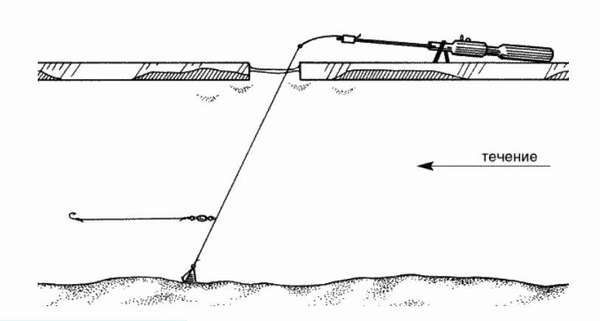
Feeder rigs - a life hack for ice fishing for roach
Tackle for catching roach in winter on the current can be equipped according to the principle of feeder rigs, only in miniature. A paternoster, asymmetrical loop or inline in a smaller version can be easily knitted with your own hands. Instead of a sinker, you can attach a small feeder. Experience confirms that such experiments on roach work well.
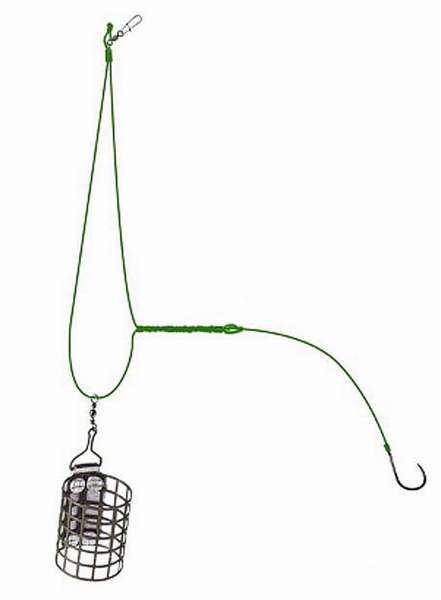
Heavy Tooling
Sometimes you have to catch roach in conditions of great depth and a very strong current, when light tackle simply cannot stay on the bottom. For example, on fast northern and Siberian rivers, you can successfully use helicopter gear to catch sorog (chebak) in the current in winter. A heavy sinker is installed at the end of the fishing line; a piece of monofilament with several leads is attached as a lead, the end of which is attached to a specially shaped blade using a swivel. Thanks to this blade, the working part stretches with the flow and maneuvers with a certain amplitude to the left and right. At the top, the fishing line is attached to a nod or a homemade signaling device. The helicopter can be made sliding, which will allow you to change the fishing horizon.
